Search Images
Browse Content (p. 703)
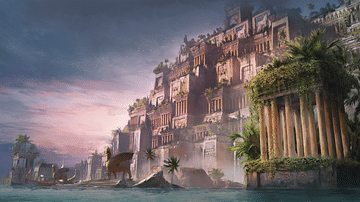
Image
Hanging Gardens (Artist's Impression)
An artist's depiction of enormous hanging gardens in a Mesopotamian inspired city. From the game Old World.
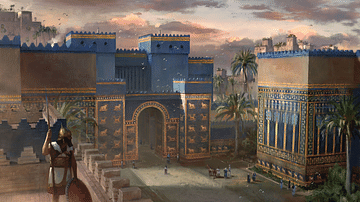
Image
Ishtar Gate (Artist's Impression)
An artist's depiction of Ishtar Gate as it may have appeared around the time it was constructed in Babylon c. 575 BCE. From the game Old World.
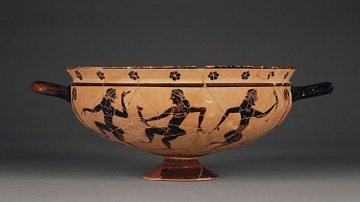
Image
Komast Dancers on an Attic Black-figure Cup
Attic black-figure cup from c. 580-560 BCE, attributed to the Painter of Copenhagen 103, in J. Paul Getty Museum 79.AE.128. Komos-dancing was a common behaviour after a symposium. The now properly drunk guests would rush out in a crazy dance...
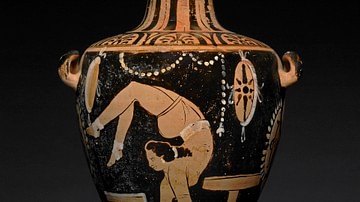
Image
Acrobat-dancer on a Hydria
A red-figure hydria (water-jar) made and found in Campania, Italy, from c. 325-350 BCE, attributed to The Foundling Painter. A dancing girl (orchestris) stands on her hands in an acrobatic act, which can be a somersault or a walk on hands...
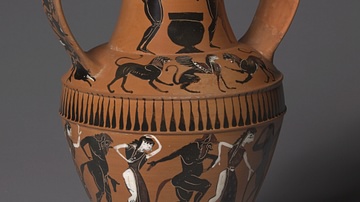
Image
Nikosthenic Amphora with Dancing Satyrs & Maenads
Nikosthenic amphora, c. 550-525 BCE, signed (under the handle) by Nikosthenes, attr. to Painter N., Thiasos Group, Attic, from Caere, Etruria, The Cleveland Museum of Art, no. 1974.10 A group of Dionysiac dancers, seven satyrs alternating...

Image
Madonna with Canon van der Paele by Jan van Eyck
The Madonna with Canon van der Paele painting by the Netherlandish Renaissance artist Jan van Eyck (c. 1390-1441 CE). 1436 CE. (Groeningemuseum, Bruges, Belgium)
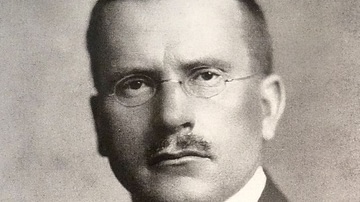
Image
Carl Gustav Jung
Photo of psychiatrist and philosopher Carl Gustav Jung (1875-1961 CE).
Ortsmuseum Zollikon

Image
Man in a Red Turban by Jan van Eyck
The Man in a Red Turban painting by the Netherlandish Renaissance artist Jan van Eyck (c. 1390-1441 CE). Believed to be a self-portrait. 1433 CE. (National Gallery, London)

Image
The Ghent Altarpiece by Jan van Eyck
The Ghent Altarpiece, aka The Adoration of the Mystic Lamb by the Netherlandish Renaissance artist Jan van Eyck (c. 1390-1441 CE). An inscription on the reverse also credits Hubert van Eyck (d. 1426 CE) but so little is known of this individual...

Image
Arnolfini Wedding Portrait by Jan van Eyck
The Arnolfini Wedding oil on oak panel painting by the Netherlandish Renaissance artist Jan van Eyck (c. 1390-1441). Created in Bruges in 1434 it shows the cloth merchant Giovanni Arnolfini with his wife Giovanna Cenami. The artist seems...